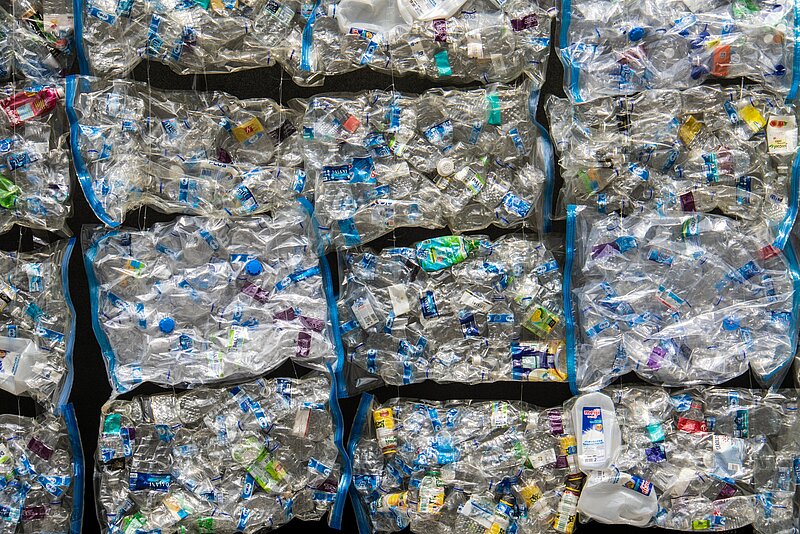The Role of Microbial Ecology in Sustainable Plastic Recycling
Plastic waste is a huge problem for the environment, with millions of tons of plastic ending up in landfills and oceans each year. While recycling has been a solution to this problem, it still faces some challenges, especially with mixed plastics. One potential solution that has emerged in recent years is microbial ecology.
Microbial ecology is the study of microorganisms and how they interact with each other and their environment. In the context of plastic recycling, microbial ecology refers to the study of the microorganisms that can break down plastic and how they work together in ecosystems to do so. Microorganisms, such as bacteria, fungi, and archaea, play a crucial role in breaking down plastics through a process called biodegradation. In order to break down plastic, these microorganisms secrete enzymes that break the plastic into smaller molecules that can be consumed by the microorganisms as food. Microbial ecology studies the diversity and interactions of these microorganisms in different environments, such as soil or water, to understand how they can be harnessed for more efficient and effective plastic recycling. For example, researchers may study the microbial communities present in landfills to identify the most efficient plastic-degrading bacteria and determine how to optimize their growth and activity. By understanding the microbial ecology of plastic-degrading microorganisms, researchers can develop new strategies for plastic recycling that are more sustainable and environmentally friendly. This includes developing new biodegradable plastics, as well as harnessing microbial communities to recycle existing plastic waste. That is what we do with our MIX-UP project!
Microbial ecology has the potential to provide sustainable solutions for plastic recycling because it relies on the natural processes of microorganisms to break down plastics into their constituent parts. This allows the plastic waste to be reused and recycled into new products without the need for energy-intensive and environmentally damaging processes. By understanding the microbial communities that are naturally present in different environments, scientists can identify and cultivate the specific microorganisms that are capable of breaking down plastics. This knowledge can then be used to design efficient and effective recycling processes that take advantage of these natural processes. Also, microbial ecology offers the potential for recycling plastics that are currently difficult or impossible to recycle through traditional mechanical or chemical processes. This includes mixed plastics, which often end up in landfills due to their complexity, as well as bioplastics, which require specialized facilities for processing.
Let's take a look at some exciting examples of microbial ecology in plastic recycling initiatives.
Plastic-eating bacteria
One of the most promising solutions to plastic waste is plastic-eating bacteria. These microorganisms have the ability to break down plastic into smaller pieces and eventually degrade them into harmless substances. Some discovered bacteria such as Ideonella sakaiensis have the ability to break down PET (polyethylene terephthalate) plastic. Researchers are currently studying this bacteria to see how it can be used in large-scale plastic recycling processes.
Composting with microbes
Composting is a process of decomposing organic waste to create a nutrient-rich soil amendment. In recent years, scientists have started using microbial ecology to compost plastics. This involves adding microbes to the composting process that can break down the plastic into smaller pieces. The smaller pieces of plastic then degrade more quickly and efficiently, ultimately leading to a more sustainable composting process. This approach has been successful in breaking down some types of biodegradable plastics, but more research is needed to develop effective microbial solutions for other types of plastics.
Bio-based materials
Another approach to plastic waste is to use bio-based materials, which are derived from natural sources such as plants. These materials can be broken down by microorganisms, making them a sustainable alternative to traditional plastics. For example, PHA (polyhydroxyalkanoate) is a biodegradable polymer produced by bacteria and can be used to make a wide range of products such as packaging materials and single-use items.
Bio-degradable additives
Bio-degradable additives are another solution that involves microbial ecology. These additives are added to plastics during manufacturing, and when exposed to the right conditions, they can be broken down by microorganisms. This approach can make traditional plastics more environmentally friendly by making them easier to degrade. However, there are concerns about the effectiveness of these additives and their potential impact on the recycling process.
While microbial ecology shows great potential in plastic recycling, one major challenge is the ability to control and optimize the microbial processes involved in plastic degradation. Microorganisms can be unpredictable and can vary greatly in their efficiency and effectiveness in breaking down different types of plastics. Further, the complex mixtures of plastics in the environment can make it difficult for microorganisms to efficiently degrade them all. Another limitation is the lack of knowledge and understanding of the microbial communities involved in plastic degradation. Research is still trying to identify and isolate the specific microorganisms responsible for plastic degradation, as well as understand their metabolism and pathways involved in breaking down plastic. This lack of understanding makes it quite difficult to optimize and control the process. Also, the scalability of microbial ecology in plastic recycling is another challenge. While laboratory studies have shown promising results, scaling up the process to a commercial level is difficult and costly. Microbial processes can be slow and require optimal conditions for growth, which can be difficult to maintain at a large scale. Finally, there are concerns about the unintended consequences of introducing new microorganisms into the environment. While some plastic-eating bacteria are naturally occurring, others are genetically modified or engineered, raising concerns about potential ecological impacts and unintended consequences. It is important to ensure that any microbial processes used in plastic recycling are safe and do not have negative impacts on the environment.


